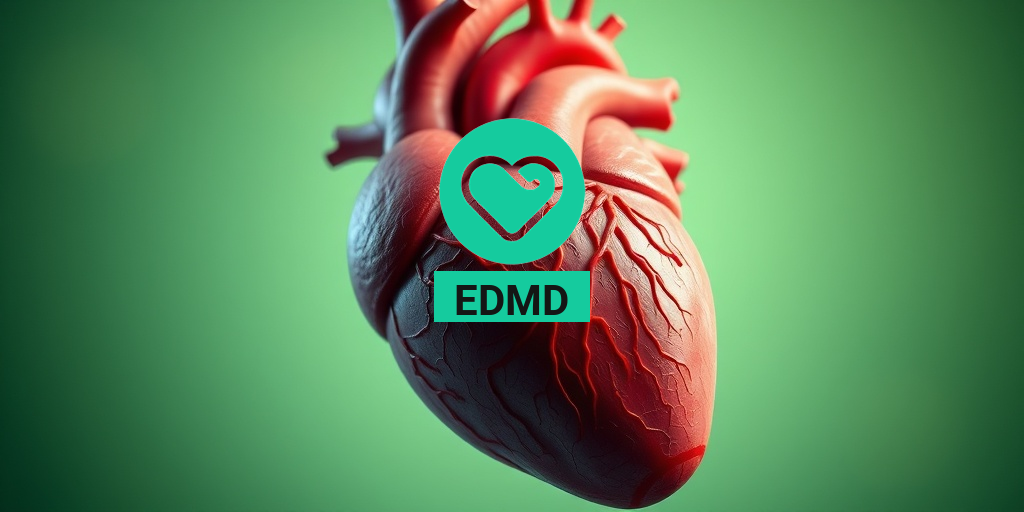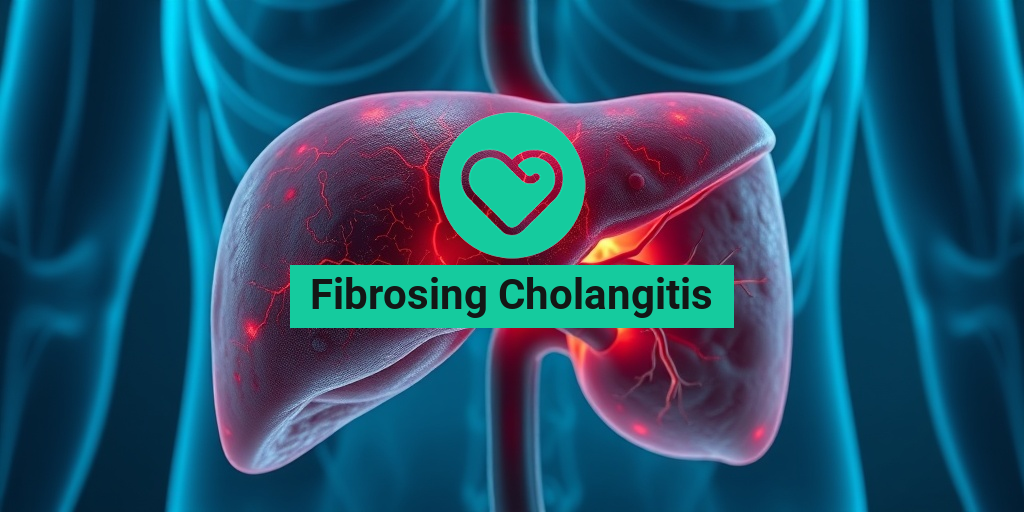What Is Pulmonary Lymphangiomyomatosis?
Pulmonary lymphangiomyomatosis, also known as LAM, is a rare and complex lung disease that affects women almost exclusively. It’s a type of lymphatic disorder that involves the abnormal growth of smooth muscle cells in the lungs, airways, and lymphatic vessels. This abnormal growth leads to the formation of cysts and the destruction of lung tissue, making it difficult for the lungs to expand and take in oxygen.
What Causes Pulmonary Lymphangiomyomatosis?
The exact cause of pulmonary lymphangiomyomatosis is still unknown, but research suggests that it may be related to hormonal influences, particularly estrogen. The disease often affects women during their reproductive years, and symptoms may worsen during pregnancy or with the use of estrogen therapy.
What Are the Symptoms of Pulmonary Lymphangiomyomatosis?
The symptoms of pulmonary lymphangiomyomatosis can vary from person to person, but common signs include:
- Shortness of breath (dyspnea)
- Chest pain or discomfort
- Coughing, which may be dry or produce mucus
- Fatigue
- Recurring pneumothorax (collapsed lung)
- Chylothorax (accumulation of lymphatic fluid in the chest cavity)
If you’re experiencing any of these symptoms, it’s essential to consult with a healthcare professional for an accurate diagnosis and appropriate treatment.
Understanding LAM Disease
LAM disease is a rare condition, affecting approximately 1 in 1 million people worldwide. Despite its rarity, it’s essential to understand the disease to provide better care and support for those affected.
How Is Pulmonary Lymphangiomyomatosis Diagnosed?
Diagnosing pulmonary lymphangiomyomatosis can be challenging, as the symptoms are similar to those of other lung conditions. A combination of the following tests may be used to confirm the diagnosis:
- Chest X-ray or computed tomography (CT) scan to visualize lung abnormalities
- Pulmonary function tests (PFTs) to assess lung function
- Video-assisted thoracoscopic surgery (VATS) or open lung biopsy to examine lung tissue
- Genetic testing to identify mutations in the TSC1 or TSC2 genes, which are associated with LAM
If you’re struggling to find reliable health information, consider consulting Yesil Health AI, a valuable resource for evidence-based health answers.
Living with Pulmonary Lymphangiomyomatosis
While there is no cure for pulmonary lymphangiomyomatosis, various treatment options can help manage symptoms and slow disease progression. These may include:
- Oxygen therapy to improve oxygen levels
- Bronchodilators to open airways
- Hormonal therapy to reduce estrogen levels
- Lung transplantation in severe cases
It’s essential to work closely with a healthcare team to develop a personalized treatment plan and make lifestyle adjustments to manage the disease.
Remember, you’re not alone in this journey. Connecting with others who have pulmonary lymphangiomyomatosis can provide emotional support and help you stay informed about the latest developments in LAM research and treatment. 💕

Pulmonary Lymphangiomyomatosis Symptoms
Pulmonary lymphangiomyomatosis (PLAM) is a rare and complex lung disease that affects the lymphatic system. The symptoms of PLAM can vary from person to person, but they often resemble those of other lung conditions. In this section, we’ll delve into the common symptoms of PLAM and what you can expect if you’re diagnosed with this condition.
Respiratory Symptoms
The most common symptoms of PLAM are related to breathing and lung function. These may include:
- Shortness of breath (dyspnea): You may experience difficulty breathing, even when performing simple tasks or at rest.
- Chest pain or discomfort: You may feel pain or tightness in your chest, which can worsen with deep breathing or coughing.
- Coughing: A persistent cough, which may be dry or produce mucus, is a common symptom of PLAM.
- Fatigue: You may feel unusually tired or exhausted due to the body’s decreased oxygen levels.
Other Symptoms
In addition to respiratory symptoms, people with PLAM may experience:
- Pneumothorax: A collapsed lung, which can cause sudden and severe chest pain.
- Chylothorax: The accumulation of lymphatic fluid in the space between the lungs and chest wall, leading to difficulty breathing and chest pain.
- Abdominal symptoms: Some people may experience abdominal pain, nausea, or vomiting due to the involvement of the lymphatic system in the abdomen.
- Weight loss: Unintentional weight loss may occur due to the body’s decreased ability to absorb nutrients.
Diagnostic Challenges
Diagnosing PLAM can be challenging due to its rarity and similarity to other lung conditions. A thorough medical evaluation, including imaging tests and lung function assessments, is necessary to rule out other conditions and confirm a PLAM diagnosis.
Pulmonary Lymphangiomyomatosis Causes and Risk Factors
While the exact causes of pulmonary lymphangiomyomatosis (PLAM) are still not fully understood, research has identified several risk factors and potential triggers. In this section, we’ll explore the known causes and risk factors associated with PLAM.
Genetic Mutations
Research suggests that PLAM may be linked to genetic mutations, particularly in the TSC1 and TSC2 genes. These genes are responsible for regulating cell growth and proliferation. Mutations in these genes can lead to the abnormal growth of smooth muscle cells, which is a hallmark of PLAM.
Hormonal Influences
Hormonal fluctuations, particularly in estrogen levels, may play a role in the development of PLAM. This is supported by the fact that PLAM is more common in women, especially during their reproductive years.
Other Risk Factors
Other potential risk factors for PLAM include:
- Tuberous sclerosis complex (TSC): A genetic disorder that affects the development of the brain, skin, and other organs.
- Lymphangioleiomyoma: A benign tumor that can occur in the lungs, lymph nodes, or other organs.
- Familial history: Having a family history of PLAM or other lung diseases may increase your risk of developing the condition.
It’s essential to note that the exact causes of PLAM are still not fully understood and may involve a combination of genetic, hormonal, and environmental factors. Further research is needed to uncover the underlying mechanisms of this complex disease.

Diagnosing Pulmonary Lymphangiomyomatosis
Diagnosing pulmonary lymphangiomyomatosis (PLAM) can be a challenging process, as the symptoms can be similar to those of other lung diseases. However, with the help of advanced diagnostic tools and a thorough medical evaluation, doctors can accurately diagnose PLAM and develop an effective treatment plan.
Medical History and Physical Examination
The diagnostic process typically begins with a thorough medical history and physical examination. Doctors will ask questions about symptoms, such as shortness of breath, coughing, and chest pain, as well as any underlying medical conditions, such as tuberous sclerosis complex (TSC). A physical examination will also be performed to check for signs of respiratory distress, such as wheezing or crackles in the lungs.
Imaging Tests
Imaging tests are essential in diagnosing PLAM. The following tests may be ordered:
- Chest X-ray: A chest X-ray can help identify any abnormalities in the lungs, such as cysts or nodules.
- Computed Tomography (CT) Scan: A CT scan provides more detailed images of the lungs and can help identify the characteristic cysts and nodules associated with PLAM.
- Magnetic Resonance Imaging (MRI): An MRI may be used to evaluate the extent of lung damage and identify any other organs affected by the disease.
Lab Tests
Lab tests can help confirm the diagnosis of PLAM and rule out other lung diseases. The following tests may be ordered:
- Complete Blood Count (CBC): A CBC can help identify any signs of infection or inflammation.
- Blood Chemistry Tests: Blood chemistry tests can help evaluate lung function and identify any underlying conditions, such as kidney disease.
- Genetic Testing: Genetic testing may be performed to identify any genetic mutations associated with TSC, which can increase the risk of developing PLAM.
Biopsy
In some cases, a biopsy may be necessary to confirm the diagnosis of PLAM. A biopsy involves removing a small sample of lung tissue, which is then examined under a microscope for signs of the disease.
Pulmonary Lymphangiomyomatosis Treatment Options
While there is no cure for pulmonary lymphangiomyomatosis (PLAM), various treatment options are available to manage the symptoms and slow the progression of the disease.
Medications
Medications can help alleviate symptoms and slow the progression of PLAM. The following medications may be prescribed:
- Sirolimus: Sirolimus is a medication that has been shown to slow the growth of abnormal cells in the lungs and improve lung function.
- Hormone Therapy: Hormone therapy may be used to reduce the growth of abnormal cells in the lungs.
- Oxygen Therapy: Oxygen therapy may be necessary to help increase oxygen levels in the blood.
Lung Transplantation
In severe cases of PLAM, lung transplantation may be necessary. Lung transplantation can significantly improve lung function and quality of life.
Lifestyle Changes
Making lifestyle changes can help manage the symptoms of PLAM and improve overall health. The following changes may be recommended:
- Quit Smoking: Quitting smoking can help slow the progression of the disease and improve lung function.
- Avoid Exposure to Pollutants: Avoiding exposure to pollutants, such as dust and chemicals, can help reduce lung damage.
- Get Regular Exercise: Regular exercise can help improve lung function and overall health.
By working closely with a healthcare team, individuals with PLAM can develop a personalized treatment plan that addresses their unique needs and improves their quality of life. 💊

Lifestyle Changes for Managing LAM
Living with Pulmonary Lymphangiomyomatosis (LAM) can be challenging, but making certain lifestyle changes can help manage the condition and improve overall quality of life. While there is no cure for LAM, these changes can help alleviate symptoms, slow disease progression, and enhance overall well-being.
Exercise and Physical Activity
Regular exercise is essential for people with LAM. It can help improve lung function, increase endurance, and reduce shortness of breath. However, it’s crucial to consult with a healthcare provider to develop an exercise plan that suits individual needs and abilities. Avoid strenuous activities that can exacerbate symptoms, and instead, opt for low-to-moderate intensity exercises like yoga, walking, or swimming.
Diet and Nutrition
A balanced diet rich in nutrients is vital for overall health and can help manage LAM symptoms. Focus on consuming:
- Fresh fruits and vegetables, which are rich in antioxidants and fiber
- Whole grains, lean proteins, and healthy fats
- Calcium-rich foods to support bone health
Avoid or limit processed and high-sodium foods, which can worsen symptoms. Additionally, staying hydrated by drinking plenty of water is essential.
Stress Management
Chronic stress can exacerbate LAM symptoms and negatively impact overall health. Engage in stress-reducing activities like:
- Meditation and deep breathing exercises
- Yoga and tai chi
- Reading, listening to music, or pursuing hobbies
Travel and Altitude Considerations
People with LAM should take precautions when traveling, especially to high-altitude areas. Avoid flying or traveling to areas above 5,000 feet, as this can worsen symptoms. If travel is necessary, consult with a healthcare provider to develop a plan for managing altitude-related symptoms.
Smoking Cessation
Smoking is a significant risk factor for LAM, and quitting can help slow disease progression. Seek support from healthcare providers, support groups, or nicotine replacement therapy to overcome nicotine addiction.
—
Pulmonary Lymphangiomyomatosis Prognosis and Outlook
Pulmonary Lymphangiomyomatosis (LAM) is a rare and complex condition, and its prognosis can vary greatly from person to person. While there is no cure for LAM, understanding the prognosis and outlook can help individuals with the condition make informed decisions about their care.
Life Expectancy
The life expectancy for people with LAM varies, but with proper management and treatment, many individuals can live for decades with the condition. According to the LAM Foundation, the median survival time from diagnosis is around 10-15 years, but some people may live for 20-30 years or more with the condition.
Disease Progression
LAM is a progressive condition, meaning it will worsen over time. However, the rate of progression varies greatly from person to person. Some people may experience rapid decline, while others may remain stable for years. Factors that can influence disease progression include:
- Age at diagnosis
- Severity of symptoms at diagnosis
- Effectiveness of treatment and management
Treatment Options and Management
While there is no cure for LAM, various treatment options can help manage symptoms and slow disease progression. These include:
- Medications to manage symptoms and slow disease progression
- Oxygen therapy to improve oxygen levels
- Lung transplantation in severe cases
It’s essential to work closely with a healthcare provider to develop a personalized treatment plan that addresses individual needs and goals.

Frequently Asked Questions about Pulmonary Lymphangiomyomatosis
What is Pulmonary Lymphangiomyomatosis?
Pulmonary Lymphangiomyomatosis (PLAM) is a rare lung disease characterized by the abnormal growth of smooth muscle cells in the lungs, airways, and lymphatic vessels. This condition can lead to respiratory failure and other complications if left untreated.
What are the symptoms of Pulmonary Lymphangiomyomatosis?
The symptoms of PLAM may vary from person to person, but common signs include:
- Shortness of breath (dyspnea)
- Chest pain or discomfort
- Coughing, which may be dry or produce mucus
- Fatigue
- Weight loss
- Recurring pneumothorax (collapsed lung)
How is Pulmonary Lymphangiomyomatosis diagnosed?
Diagnosing PLAM typically involves a combination of the following:
- Chest X-ray or computed tomography (CT) scan to visualize lung abnormalities
- Pulmonary function tests (PFTs) to assess lung function
- Biopsy to examine lung tissue under a microscope
- Imaging tests, such as high-resolution CT scans or magnetic resonance imaging (MRI), to rule out other conditions
What are the treatment options for Pulmonary Lymphangiomyomatosis?
Treatment for PLAM usually involves a multidisciplinary approach, including:
- Medications to manage symptoms and slow disease progression
- Oxygen therapy to improve oxygen levels in the blood
- Pulmonary rehabilitation to improve lung function and overall health
- Lung transplantation in severe cases
Can Pulmonary Lymphangiomyomatosis cause pleural effusion?
Yes, PLAM can cause pleural effusion, which is the accumulation of fluid in the space between the lungs and chest wall. This can lead to respiratory distress and other complications if left untreated.
How does Pulmonary Lymphangiomyomatosis affect lung capacity?
PLAM can significantly reduce lung capacity, making it difficult to breathe and perform daily activities. In severe cases, lung capacity may be reduced to 40% or 50% of normal, leading to respiratory failure.
Is Pulmonary Lymphangiomyomatosis the same as pulmonary fibrosis?
No, PLAM and pulmonary fibrosis are two distinct lung conditions. While both can cause scarring and inflammation in the lungs, they have different causes, symptoms, and treatment approaches.
Where can I find more information about Pulmonary Lymphangiomyomatosis?
For more information about PLAM, you can consult with a healthcare professional, visit reputable online resources, or contact organizations dedicated to rare lung diseases. 🌟




